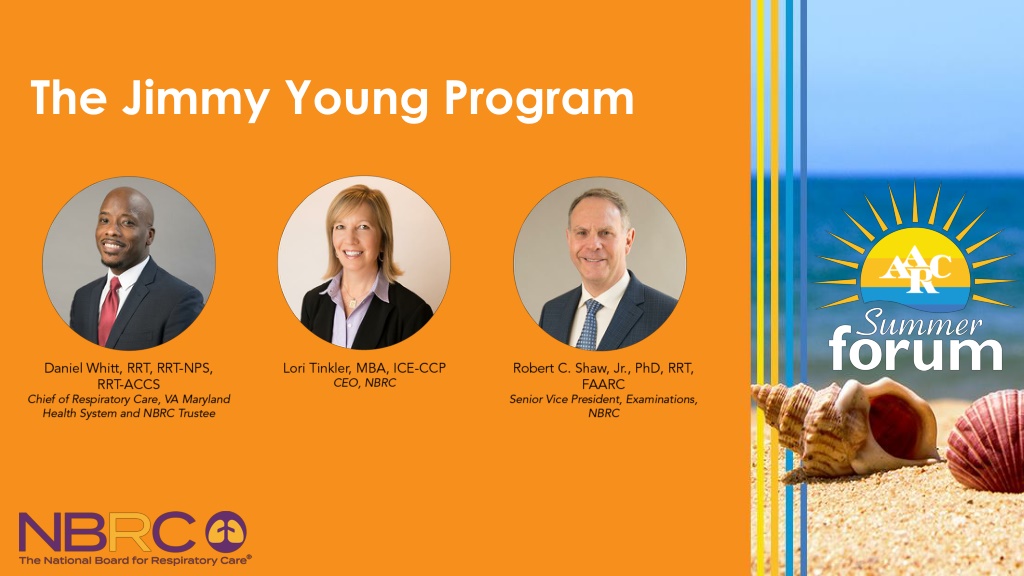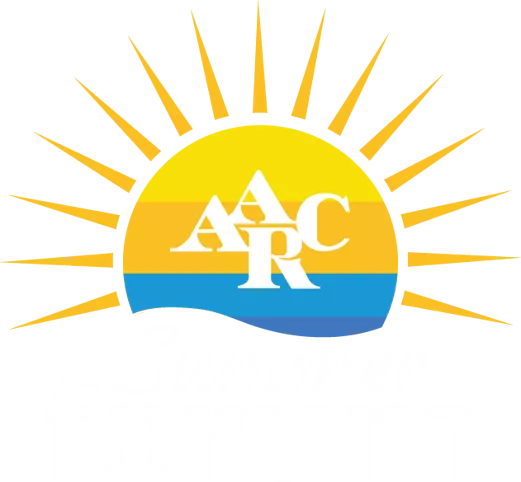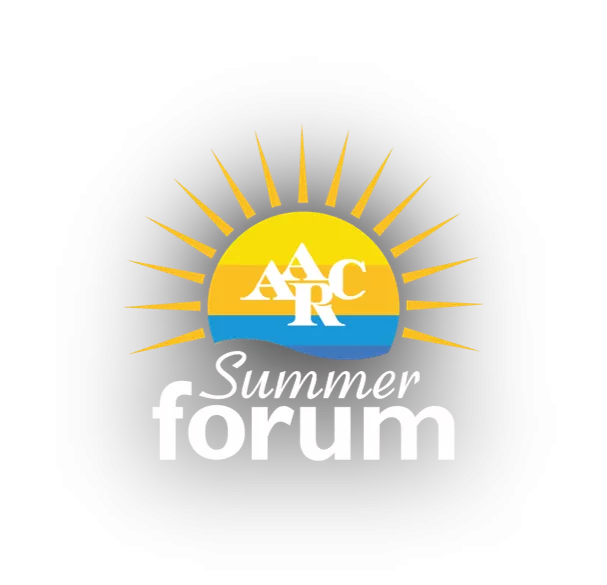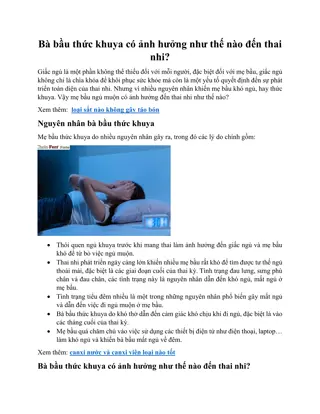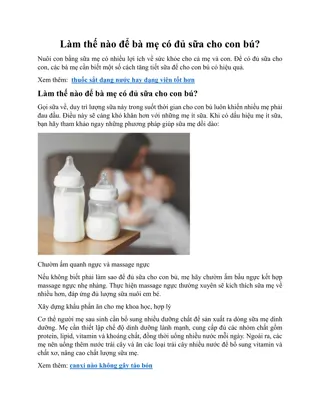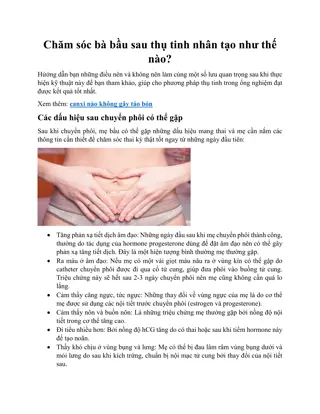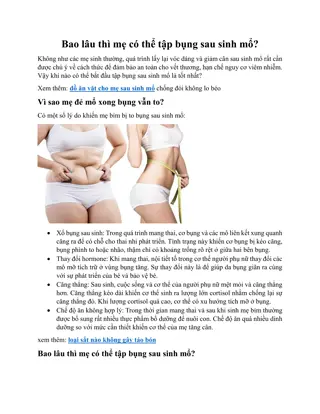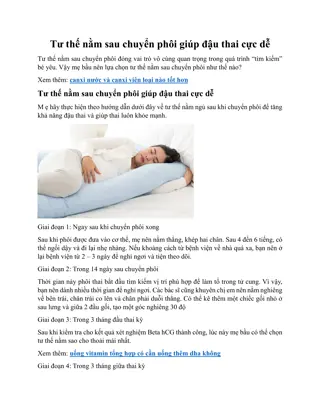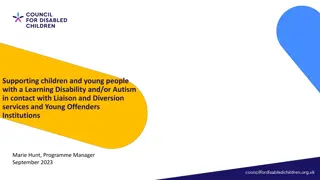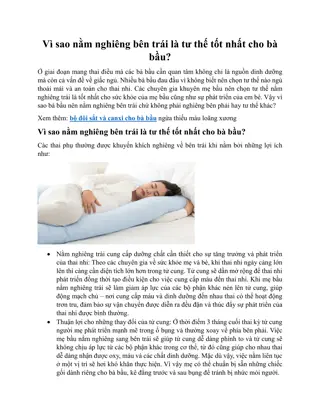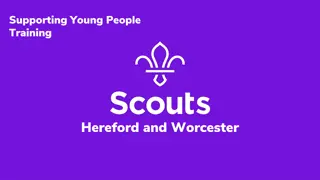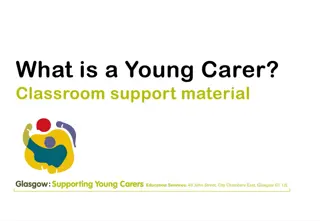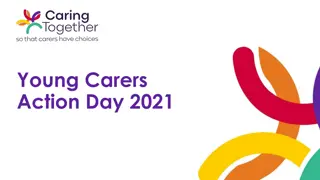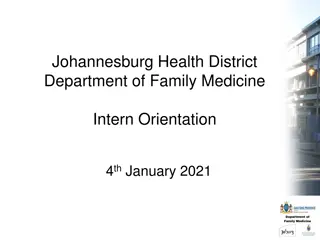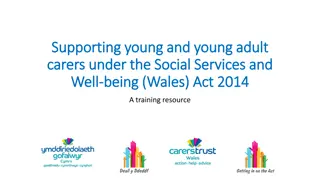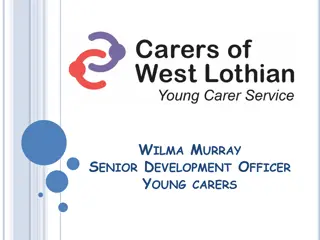The Jimmy Young Program
Explore the career achievements of Jimmy Young, a prominent figure in respiratory therapy, and how the NBRC is honoring his legacy through educational programs and resources. Learn about career ladders for respiratory therapists, leveraging NBRC resources, and recent advancements in the field. Gain insights into credential maintenance policies and opportunities for career enhancement.
Download Presentation

Please find below an Image/Link to download the presentation.
The content on the website is provided AS IS for your information and personal use only. It may not be sold, licensed, or shared on other websites without obtaining consent from the author.If you encounter any issues during the download, it is possible that the publisher has removed the file from their server.
You are allowed to download the files provided on this website for personal or commercial use, subject to the condition that they are used lawfully. All files are the property of their respective owners.
The content on the website is provided AS IS for your information and personal use only. It may not be sold, licensed, or shared on other websites without obtaining consent from the author.
E N D
Presentation Transcript
Conflict of Interest Lori Tinkler and Robert Shaw are employed by the NBRC.
Learning Objectives Describe typical features built into a career ladder for respiratory therapists. Illustrateopportunities to enhance a career ladder with resources from the NBRC. Apply knowledge of the Dunning-Kruger effect to credential maintenance policiesintended to protect patients. Describe recent activities around advanced practice respiratory therapy.
Through this program, the NBRC has honored the memory of Jimmy Young along with contributions he made to respiratory care since 1978 Jimmy Albert Young, MS, RRT 1935 1975
Career synopsis In a 15-year career, Jimmy achieved the RRT directed an education program published a widely-used textbook directed a hospital department served as AARC President served as an NBRC trustee 1935 born in South Carolina 1960 1966 served as Chief Inhalation Therapist at the Peter Bent Brigham Hospital, Boston 1965 earned the RRT (#263) 1966 1970 served in several roles including director of the education program at Northeastern University, Boston 1970 became director of the Respiratory Therapy Department at Massachusetts General Hospital, Boston 1973 became the AARC s 22nd President 1975 was serving as an NBRC Trustee and member of the Executive Committee when he passed away unexpectedly
Leveraging NBRC Resources While Supporting Career Ladders
Career Ladder Examples Facilities Children s Mercy Hospital, MO INOVA Hospital, VA Rush University Hospital, IL Veterans Health Administration Hospital, MD Akron Children s Hospital, OH
Example 1 - Levels and expectations IV Advanced in once area with additional competencies in multiple other areas RRT Bachelor s degree 16 CEUs per year Cross functioning such as inpatient- outpatient, adult-pediatric, outpatient-critical care III Advanced in one area with additional competencies in other areas RRT 16 CEUs per year Specialty credential e.g., ACCS, SDS, AE-C, NPS, RPFT 2 QI projects Committee participation Professional membership II Advanced in one area RRT or CRT+10 years 12 CEUs per year ACLS, PALS, or NRP 1 project I Basic 8 CEUs per year
Example 1 Starting and progressing Apply to start on the ladder May start at any time during the year. Escalated by Director/Manager to an oversight group for approval Being in a discipline process is a barrier. Start at the bottom level, then move up in the sequence. Maintenance at a level means continuing to satisfy the requirements. Those at risk of falling from a level can expect to develop an action plan with the Director/Manager.
Example 2 - Levels and expectations IV Master s degree, leadership+5 years, Bachelor s degree+10 years 30 CEUs Leadership activity X5 Education or others X4 QI activity X4 Community serviced-12 hours Clinical practice research, innovation, evidence-based practice X4 III Adds professional membership Bachelor s degree, leadership+5 years 30 CEUs Leadership activity X4 Education of others X4 QI activity X3 Community service-9 hours Clinical practice research, innovation, evidence-based practice X3 II Adds national professional certification Bachelor s degree, leadership+3 years, or Associates+5 years 25 CEUs Leadership activity X3 Education of others X3 QI activity X2 I Completes local requirements for at least one year Acquires license 20 CEUs Leadership activity X1 Education of others X1 QI activity X1
Example 2 Recognized achievements in leadership Participate in initiates wellness, error prevention, safety. Maintain a department newsletter. Represent the hospital in a community organization. Represent the profession at open- house, career fair, health fair. Mentor newer employees. Earn a hospital award or recognition. Participate in interviews of new potential new hires. Coordinate the journal club. Participate in the planning of a conference local, regional, or national Hold an office in a professional organization. Participate in a hospital committee unit, division, special interest, organization-wide.
Example 2 Recognized achievements in the education-of-others Act as a super-user. Precept new employees. Supervise students or colleagues. Implement a department competency assessment verification method. Instruct at a national course. Present an article at journal club. Provide community-based education. Present during a department update, class, or meeting. Present at a higher education institution. Present a poster or presentation at a conference local, regional, national. Develop an informational brochure for patient, family, or staff. Author an article.
Example 2 Recognized achievements in community service Volunteer time to philanthropic events. Volunteer time to children s clubs or organizations. Serve on a school PTO or similar volunteer activity. Lead a Neighborhood association. Volunteer time on a mission trip. Participate with community organizations Salvation Army, church.
Example 2 Recognized achievements in quality improvement Participate in department quality initiative. Participate in quality data collection for a project directed by the department quality coordinator. Participate in QI team or committee. Present quality-related poster or presentation. Participate in a workshop for Lean System Daily Management or Lean Rapid Process Improvement. Teach modules within an improvement academy course. Complete a huddle. Summarize an organizational management book. Author a peer-reviewed quality project. Act as a unit/department infection prevention and control advocate.
Example 2 Recognized achievements in clinical practice analytics Participate as a member of the evidence-based practice scholars' program. Integrate best practice evidence with clinical expertise and patient values. Revise a policy or procedure about clinical practice. Contribute to updates as an item writer for a national examination. Implement an educational plan that disseminates the care approach from literature or consensus. Edit a textbook in the professional discipline. Author a chapter in a discipline s textbook. Present findings about evidence- based practice to service line personnel. Presents a clinical practice assessment to staff. Author an evidence-based practice manuscript in a peer-reviewed publication. Attain a higher, or specialty, certification. Present evidence-based practice guidance in a poster or presentation at a conference local, regional, national. Apply an advanced competency or technique to 10 patients. Implement a new test, instrument, or method.
Example 2 Recognized achievements in research Author a research protocol approved by the IRB. Author the background section of a research protocol submitted to the IRB. Serve as the principle investigator or sub-investigator for an active protocol approved by the IRB. Collect study data from the charts of at least 35 patients within a one-year time frame. Enroll subjects who have consented for a research study. Analyze study data after the collection period is completed. Present results of research findings to patient care services, grand rounds, or a research symposium. Publish a research manuscript in a peer-reviewed publication. Present research findings in a poster or presentation at a conference local, regional, national. Participate as a member of the IRB.
Example 3 - Levels and expectations Clinical Manager Paid by salary 24/7 responsibilities Controls activities of one of four sections. Supervises staff, schedules, assignments, and daily operations. Responsible for equipment, procedures, and supplies. Monitors expenses and revenue plus care provided by staff. Acts as a liaison among departments, families, and medical staff. III Paid by the hour Provide leadership to optimize patient care while ensuring quality and safety. Provide training to increase skills and competencies of staff. Ensure communication among staff, physicians, and nurses. Assist with development of protocols and guidelines. Conducts staff performance evaluations. Leads committees Coordinates research II Paid by the hour Function as a clinical specialist in critical care of adults or neonates/pediatrics. Orient new employees and precept students. Provide charge therapist and critical care team leader duties. Serve on department committees. Bachelor s degree RRT-ACCS or RRT-NPS I Paid by the hour. Independently function in adult or pediatric/neonatal areas. Is a member of national professional association and state chapter. RRT State license Pass departmental competencies BLS or PALS before start ACLS or NRP within 90 days of start
Example 4 - Titles and expectations GS 15 National Program Manager Maintain license and RRT GS 14 Chief of Respiratory Care Services Maintain license and RRT GS 13 Assistant Chief of Respiratory Care or Program Manager including Advanced Practice Respiratory Care Practitioner Maintain license and RRT, one year of GS 12 equivalent experience, demonstrated APRT KSAs GS 12 Lead Respiratory Therapist or Program Coordinator Maintain license and RRT GS 7, 9, or 11 Registered Respiratory therapist Maintain license at RRT level GS 5 Respiratory Therapist Completion of CoARC program Other requirements: Citizen of the United States unless a shortage is documented
Example 5 Integration with NBRC credential maintenance assessments Career Ladder Domains Clinical Educational Leadership Assessment participation matches educational experiences to learning needs Assessment participation demonstrates the following: Awareness of one s strengths and opportunities Taking responsibility for one s own professional development Proactively seeks learning opportunities
Example 5 Financial incentives Individuals on the career ladder receive a lump sum bonus. Fees are reimbursed Educational advancement to Baccalaureate or Masters levels Specialty credentials, for example, RRT-NPS, RPFT Professional membership, for example, AARC, SCCM Recognitions Lapel pin Certificate for each level
Summarizing career ladder examples Monetary Hourly or salaried Increased compensation with ladder advancement Reimbursing fees Responsibility shift or 24/7 Cross functionality inpatient/outpatient, adult/children, therapeutics/diagnostics Continuing education credit levels lower or higher Highest academic degree undergraduate or graduate General or specialty NBRC credential achievement and maintenance License maintenance
Summarizing career ladder examples Activity domains Leadership Education of self or others Quality improvement Clinical Research Volunteering Profession Community Presentations Authorship
Credential maintenance program information and potential uses within career ladders
What broad domains do assessments cover? General respiratory therapy Therapists who maintain CRT and RRT. Pulmonary function technology Technologists who maintain CPFT and RPFT. Sleep Disorders Specialty Therapists who maintain the CRT-SDS and RRT-SDS. Neonatal / Pediatric Specialty Therapists who maintain the CRT-NPS and RRT-NPS Adult Critical Care Specialty Therapists who maintain the RRT-ACCS. Asthma Educator Specialty Personnel who maintain the AE-C.
What justifies the content that stimulates each new item? Those who are maintaining a credential are surveyed. Responses reveal those activities that put patients at high risk and experience high knowledge turnover. Among activities covered by examinations for initial credentialing, assessments focus on high-risk plus high- turnover content.
Consider the alternative Participants interact with continuing education that is convenient for them to obtain. Even if preceded by a self-evaluation of learning needs, an individual may not identify their true deficits or match those up with sufficient remediation. Kruger J & Dunning D. (1999).Unskilled and Unaware of It: How Difficulties in Recognizing One s Own Incompetence Lead to Inflated Self-Assessments. Journal of Personality and Social Psychology, 77(6), 1121-1134, https://doi.org/10.1037/0022- 3514.77.6.1121
Dunning-Kruger Observations Ability to recognize humor Ability to apply logical reasoning After training, ability to logically reason Ability to apply grammar
Conclusions of Dunning & Kruger Those in the bottom quartile not only overestimated their abilities by a large amount, but also perceived their abilities to be higher than the measured average. The same incompetence that leads them to make wrong choices also deprives them of the savvy necessary to recognize competence, be it their own or anyone else s. After inviting back the bottom and top quartiles to allow observations of peers, despite seeing superior performances of their peers, bottom-quartile participants continued to hold the mistaken impression that they had performed just fine. The accuracy of self-appraisals increased among high performers after observing peers.
Who decides what assessments cover? A panel of 8 members who are also maintaining the general respiratory therapy credential. Panels of 6 members each who also are maintaining each specialty credential. Members of each panel do the following each year: After staff have evaluated needs, write new items as assigned. Give feedback to another writer about each new item. Convene with panel members and staff to edit and then approve each new item, its explanations, and its reference citation. Contribute individually to a key validation. Resolve key validation disagreements and comments. Contribute data that inform the passing standard for each quarter s assessment.
What feedback do assessments provide to participants? Whether the best response was selected. The proportion of peers who selected the best response. The explanation of the best response plus each distractor. A reference citation that supports the best response. A Most Missed Concepts write-up of topics about which therapists confidently selected an incorrect response.
Besides self-improvement, which can be challenging to quantify, can credential maintenance otherwise help a therapist in an obvious way? A 90% participation level over the four assessments from a calendar year will yield free CRCE. General respiratory therapy = 6 Each specialty = 3 In 2022, there were 16,064 therapist who earned CRCE this way. Among those who answered every assessment item, most decreased the number of continuing education credits to be documented in the NBRC system.
Feedback from the credential maintenance program
Survey Flow Have you completed a CMP assessment? No Yes About what would you like to provide feedback? About which of the following topics do you need additional info? I am unclear about details regarding CMP. I think an assessment item has a flaw. What is CMP? Are assessments required? What if I perform poorly? What should I study? Why did I get a reminder? Is my credential about to expire? What happens if I lose internet? Why did I get zero points?* I forgot to do an assessment.* Other (please specify) In what assessment did you see the flawed item? TMC ACCS PFT NPS SDS Explain the flaw. * Added 2/23/2022
Most respondents have completed an assessment and use the survey to learn more details about the CMP Q1 2021 thru Q1 2023 Have you completed a CMP assessment? About which of the following would you like to provide feedback? Believe item has a flaw 34% No 22% Unclear about CMP details 66% Yes 78% n=1,919 n=1,074
Top two most frequently asked topics 58% 47% 54% 37% 42% 33% Q1 2021 Q2 2021 Q3 2021 Q4 2021 Q1 2022 Q2 2022 Q3 2022 Q4 2022 Q1 2023 n=182 N=189 N=75 N=119 N=49 N=114 N=116 N=161 N=98 Will I lose my credential if I don t perform well? (% of respondents who selected) Are the CMP Assessments Required? (% of respondents who selected)
Interest in What is the Credential Maintenance Program (CMP)? has remained fairly constant 41% 38% 28% Q1 2021 Q2 2021 Q3 2021 Q4 2021 Q1 2022 Q2 2022 Q3 2022 Q4 2022 Q1 2023 N=182 N=189 N=75 N=119 N=49 N=114 N=116 N=161 N=98 What is the Credential Maintenance Program (CMP)? (% of respondents who selected)
For topics related to reminders, there has been more concern about completed documentation than expiring credentials 37% 25% 23% 12% 15% 9% Q1 2021 Q2 2021 Q3 2021 Q4 2021 Q1 2022 Q2 2022 Q3 2022 Q4 2022 Q1 2023 n=182 N=189 N=75 N=119 N=49 N=114 N=116 N=161 N=98 I ve already submitted CEU documentation. Why am I receiving a reminder about completing the quarterly CMP assessment? (% of respondents who selected) I received a reminder about the CMP assessment. Is my credential about to expire? (% of respondents who selected)
Concerns to be addressed before completing an assessment have been of greater interest than potential issues during an assessment 37% 25% 18% 18% 9% 5% Q1 2021 Q2 2021 Q3 2021 Q4 2021 Q1 2022 Q2 2022 Q3 2022 Q4 2022 Q1 2023 n=182 N=189 N=75 N=119 N=49 N=114 N=116 N=161 N=98 What happens if I lose my internet connection while I m completing a CMP assessment? (% of respondents who selected) Should I study for the CMP assessments and what resources should I use? (% of respondents who selected)
Respondents may submit topics about which they would like more information New topics have been added to the list following analysis of respondents submissions and changes to CMP policies. 39% 26% 17% 18% 16% 4% Q1 2022 Q2 2022 Q3 2022 Q4 2022 Q1 2023 N=49 N=114 N=116 N=161 N=98 I forgot to do an assessment. May I do it now? (% of respondents who selected) Why did I get zero points? (% of respondents who selected)
Have questions about the CMP? What is the Credential Maintenance Program? video Answers to the questions from the CMP survey CMP FAQs For additional assistance, email cmpsupport@nbrc.org
Potential uses of specialty credentials within career ladders
In one sense, specialty NBRC credentials are a purer form of occupational certification. A typical candidate for ACCS, NPS, PFT, SDS, and AEC credentials is eligible without additional formal education. Such a process fits well with the intent behind a career ladder that recognizes advancement, enrichment, and new achievements. The specialty examination pass/fail result mostly just reflects on the individual rather than an education program or an employer. About 65% of therapists (n=692) maintain at least one specialty credential while tending to work in large facilities. Personal reasons are stronger motivations for getting a specialty credential such as satisfaction, dedication, and advancement, compared to compensation. Among those who do not intend to get a specialty credential, tendencies are more experience,more education, wider variety of settings, and fewer interactions with specialty credential holders.
Real-life specialty credential integration Within the career ladder examples, moving to the second or third step, out of four steps, typically includes achievement of a specialty NBRC credential. Such achievement is an observable way to document the following, which employers value: Deeper learning Cross-functionality enabling nimble responses to changing patient-mix needs Stronger professional commitment Staff with specialty credentials feel they have more control over assignments. Some leadership positions require specialty credentials.
If APRT jobs expand, it is uncertain whether RT career ladders add a step or the individual moves to a different ladder The current state of things There is one formal education program in the state of Ohio while a handful of other programs have been discussed. There is one person occupying an APRT pulmonary division job within the VA Maryland Health System; a second such sleep division job is under evaluation. The state of North Carolina is evaluating an APRT license. The NBRC starts developing an APRT Outcomes Examination in 2023 under staff guidance while involving personnel from CoARC, Ohio, the VA in Maryland, and North Carolina. Also represented are physicians, a nurse practitioner, and therapists. An APRT Credentialing and Examination Committee is supported by the AARC, chaired by David Vines & Bill Croft.
Career ladders can show respiratory care personnel a pathway that can encourage the following: Better patient care Increased therapist engagement Persistence in the job Showing a roadmap for career progression
Typical characteristics of career ladders Describes how money can be spent on career-supporting expenses and how personnel are compensated. Often leverages achievement and maintenance of academic degrees, licenses, and credentials as necessary steps for advancement. Defines domains of enriching activities in which therapists can also engage to advance.
Each new department that integrates the credential maintenance program into its operations can help answer persistent questions held by therapists. Are credential maintenance assessments required? No However, you will help your patients and yourself by participating. Can credential maintenance assessments cause me to lose my credential? No However, failing to document enough, or any, continuing education credits about the topics dictated by the credentials you are maintaining will do so. For example, an RRT-NPS has two domains to maintain, while an RRT- ACCS, RPFT has three.
NBRC resources in the form of initial credentialing, specialty credentials, and credential maintenance can contribute to future career ladders. Programs in specialty areas can help document new cross-function competence and its maintenance. I used to just do general RT, but this new or maintained credential indicates I can also do the following: Diagnostics pulmonary function, sleep Children neonates, pediatrics Critical care adults, children Asthma education Credential maintenance program assessments are the antidote to ability degradations into the low Dunning- Kruger zones.
